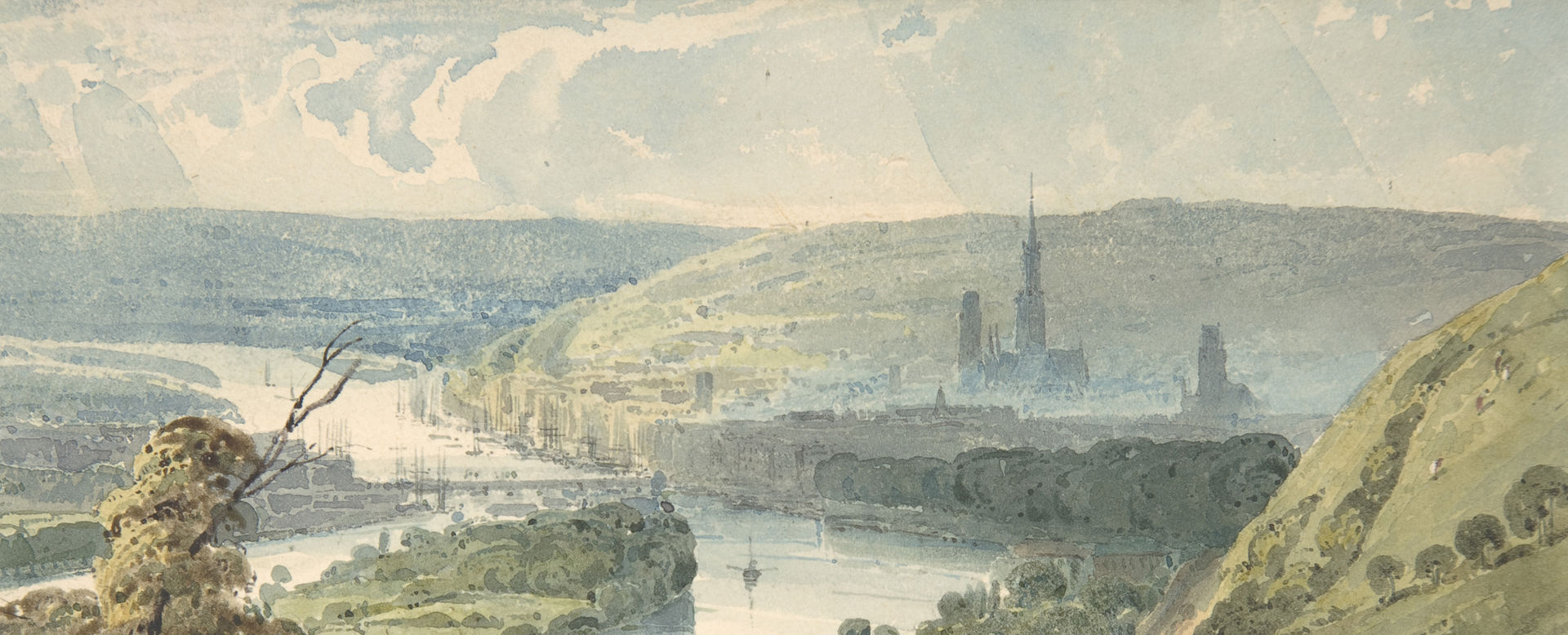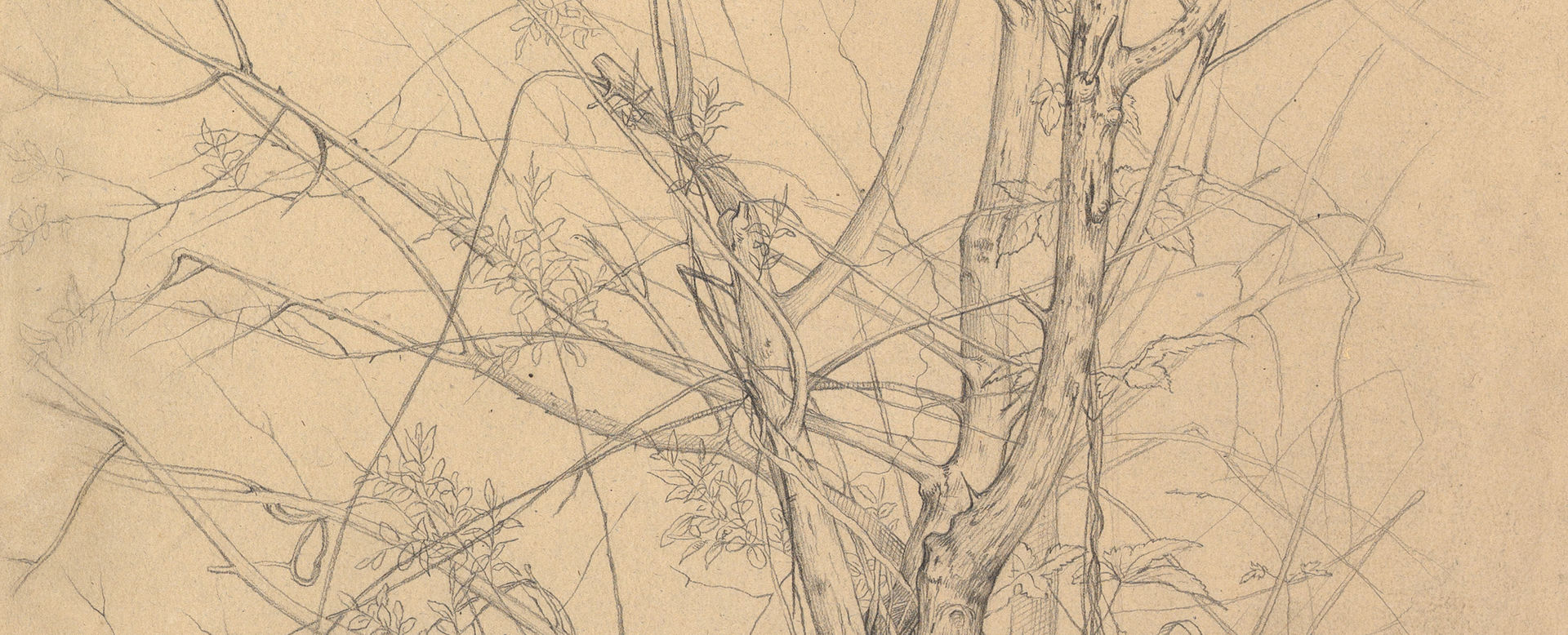Design for a Set of Matching Gold, Black Enamel, Diamond, Pearl, and Carmine Stone Brooch and Earring in a Scrapbook with Jewelry Designs in Watercolor and Gouache
Not on view
Drawing with a design for a set of matching gold, black enamel, diamond, pearl, and carmine stone brooch and earring, part of a modern scrapbook with 22 sheets showing designs for jewelry with pearls, diamonds and other (semi-)precious stones all done in watercolor and heightened with gold, characteristic of the period between 1970 and 1930, which saw some of the most extravagant and innovative trends in jewelry design. By the second half of the nineteenth century, the naturalistic compositions of earlier decades had become more complex, and the colors in nature mimicked by the color of gemstones used for jewelry design. In the last years of the century, designs for jewelry had become even more elaborate and relied in the natural beauty of cabochon gems, curving, and figurative designs with symbolic meaning, typical of the Arts and Crafts movement. Towards the end of the nineteenth and through the first decades of the twentieth century, diamond jewelry was re-interpreted to create the new 'garland style', and the Art Nouveau movement created sinuous and organic pieces that moved away from conventional stones and put emphasis on the subtle effects of materials such as glass, horn and enamel. During the 1920s, the economic boom following the war saw an increased glamour in jewelry design, with sharp, geometric patterns that celebrated modernity and the machine age. Art Deco jewelry is characterized by dense concentrations of gemstones and the use of platinum in place of gold, with inspiration from all over the world, especially from the Near and Far East.
Like most of the drawings in the album, this design is fully rendered with gouache, showing not only the styles for the jewelry designs, but also suggesting choices of precious metals, stones, and other materials to be used in the creation of the jewels. It is also possible that these designs are real-sized, allowing the customer to visualize the jewel fully from this presentation drawings before commissioning its manufacture.
The design for a brooch is made up of a gold roundel decorated with strips of black enamel and two smaller roundels, one above and one below, each containing a white pearl. The roundel contains a round carmine stone flanked to the sides by strips of diamonds with a white pearl in the middle, all of them framed above and below by two horizontal strips of black enamel.
The design for an earring is of the same shape as that for a brooch, except it is smaller and does not have the smaller roundels with the pearls.
It is likely that the carmine stone was actually made up of carmine-colored glass or carmine enamel, both techniques widely used during the last years of the nineteenth century and the first of the twentieth.


